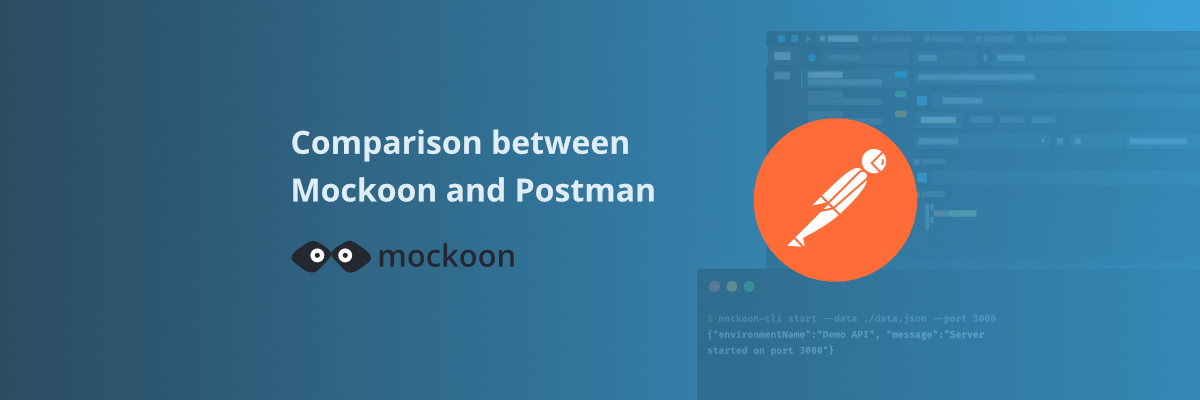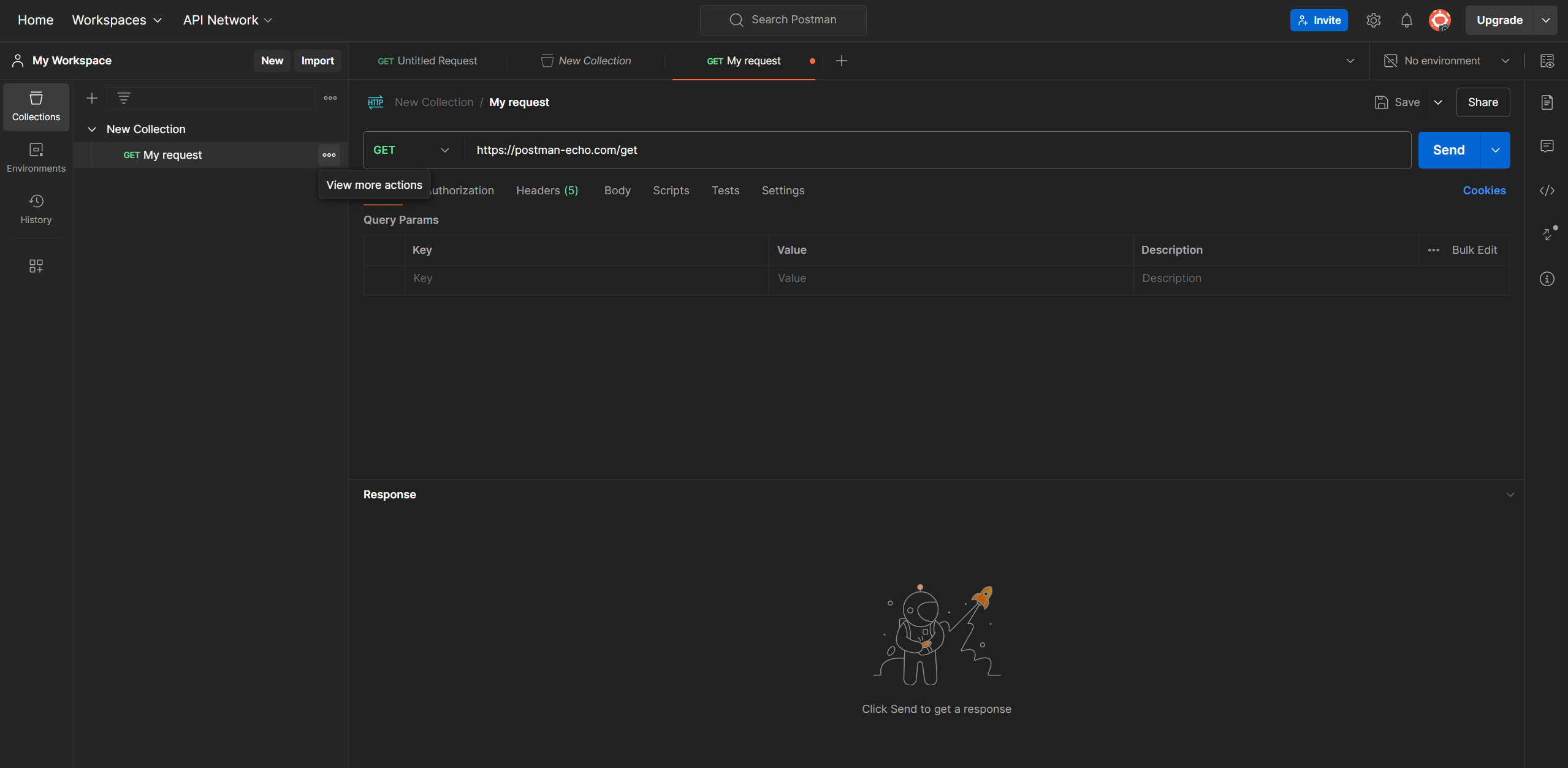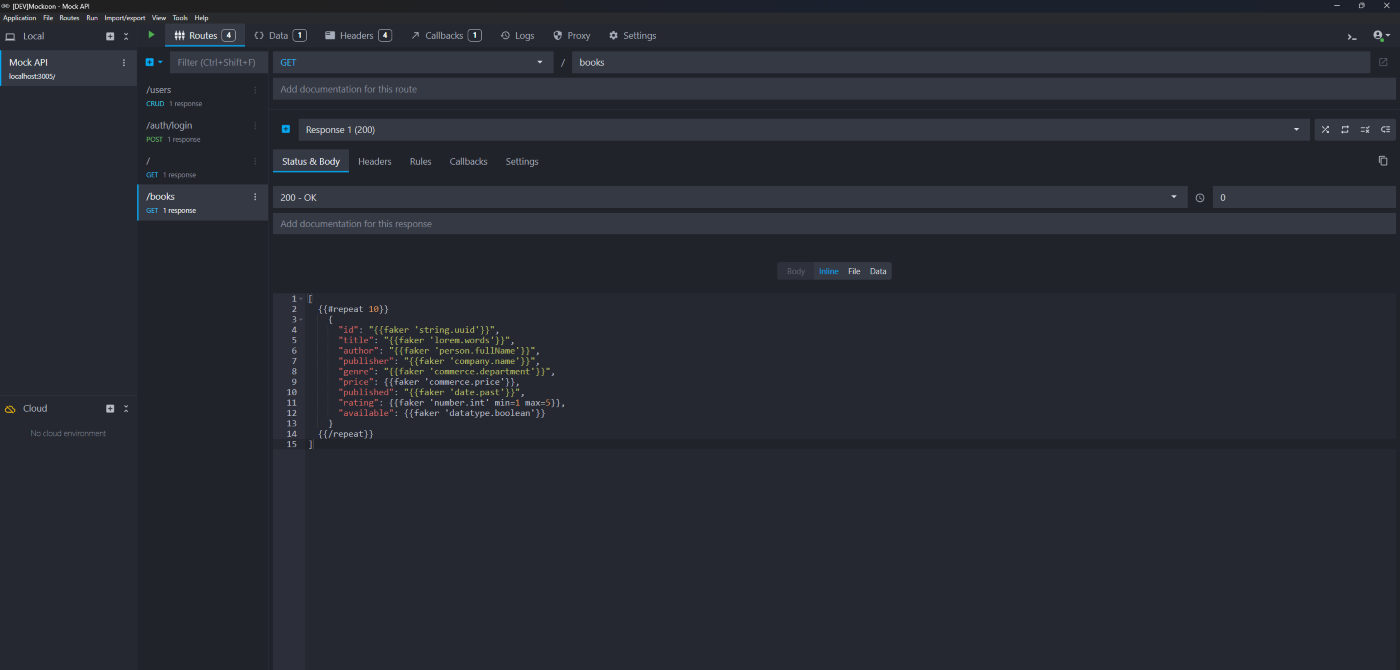
Comparison between Mockoon and Postman's API mocking services
Discover the differences between Postman and Mockoon API mocking services: cloud offer, features, and more
What is Postman?
Postman is an online platform and desktop tool that enables developers to design and test APIs. Among its many features, Postman includes API mocking capabilities integrated into the application. Although not primarily an API mocking tool, it allows users to run cloud mock endpoints based on a collection of responses received during API testing.
 Screenshot of Postman's interface
Screenshot of Postman's interface
What is Mockoon?
Mockoon is a set of open-source tools that allow developers to mock APIs quickly and easily. It offers an offline-first and privacy friendly desktop application to design and run mock APIs locally. A CLI and various libraries are also available to deploy your mock APIs anywhere: CI/CD pipelines, servers, etc.
Mockoon features include a powerful templating system to generate dynamic and realistic mock data, a rules system, a proxy mode to partially mock API endpoints, and many customization options: status codes, dynamic headers, TLS, file serving, etc.
Mockoon Cloud is also available for teams and organizations looking for a cloud-based solution. It enables teams to collaborate on API mocking projects and share mock APIs with others by deploying them to the cloud.
💡 Get started with Mockoon: Download Mockoon or Discover Mockoon Cloud
 Screenshot of Mockoon's interface
Screenshot of Mockoon's interface
Offer comparison
Below is a comparison of the main characteristics of Postman and Mockoon respective offers:
| Postman | Mockoon | |
|---|---|---|
| Offline/Cloud based | Cloud only | Offline and Cloud |
| Tools provided | Online interface and desktop application | Desktop application to design your mock CLI, Docker image and GitHub Action to deploy anywhere Web application for our Cloud customers |
| Free/paid | Freemium | Free for the open-source tools, paid for the Cloud |
| Billing | Billed per seat | Billed per seat |
| Main cloud features | API mocks deployment and team collaboration | Deployments, team collaboration and AI assistant |
| Open-source | Some tools are open-source but not the API mocking feature | |
| Enterprise support |
Features comparison
While Postman and Mockoon offer similar API mocking capabilities, they have different approaches. Below is a comparison of the main features of Postman and Mockoon:
| API mocking Features | Postman | Mockoon |
|---|---|---|
| Self-host | A CLI, Docker image and GitHub Action are available to deploy in headless environments | |
| Proxy mode | Documentation | |
| OpenAPI support | Documentation | |
| Recording | Mocks can be created from previously called endpoints | Mockoon can create mock endpoints based on entering requests |
| CRUD operations | Automated CRUD endpoints with fake databases | |
| Response rules | Simple matching algorithm | Advanced system of rules |
| Dynamic/realistic data | Basic fake data can be generated with dynamic variables | Advanced templating system and AI assistant to generate realistic fake data |
| Callbacks/Webhooks | Callbacks system | |
| File serving | Documentation | |
| Custom headers | At endpoint's level | At endpoint's and server's levels Supports templating helpers for dynamically generated headers |
| Customizable status code | ||
| Route regex | Documentation | |
| GraphQL support | ||
| Slow network/server simulation | At server's level | At server's and endpoint's levels |
For more comparisons between Mockoon and other tools, check out our other articles:
Mockoon vs Beeceptor, Mockoon vs Mock Service Worker, Mockoon vs Mockable, Mockoon vs MockServer, Mockoon vs ReadyAPI, Mockoon vs Requestly, Mockoon vs Stoplight, Mockoon vs WireMock Cloud